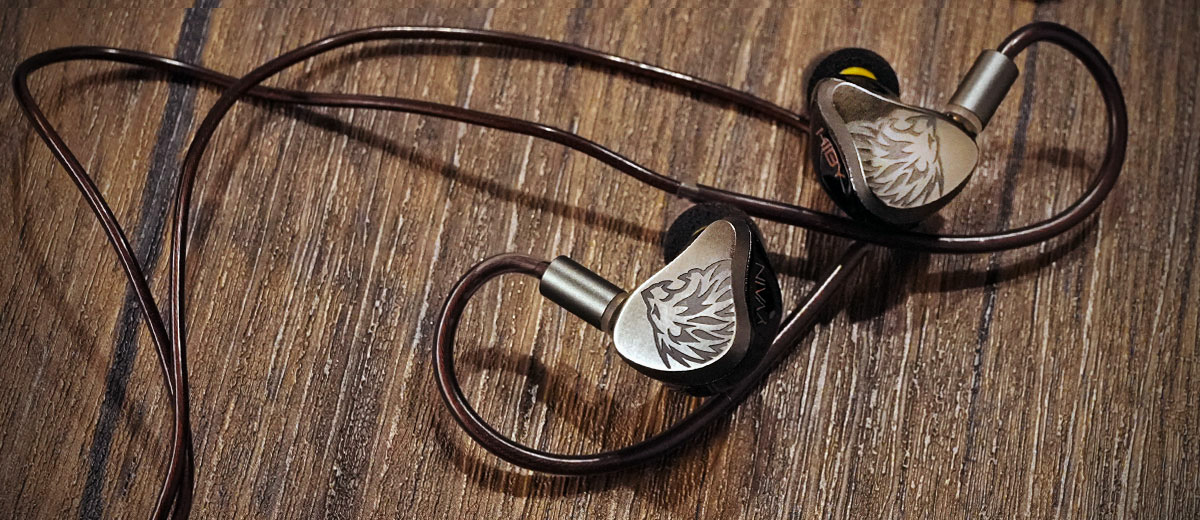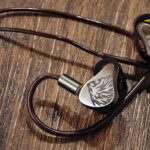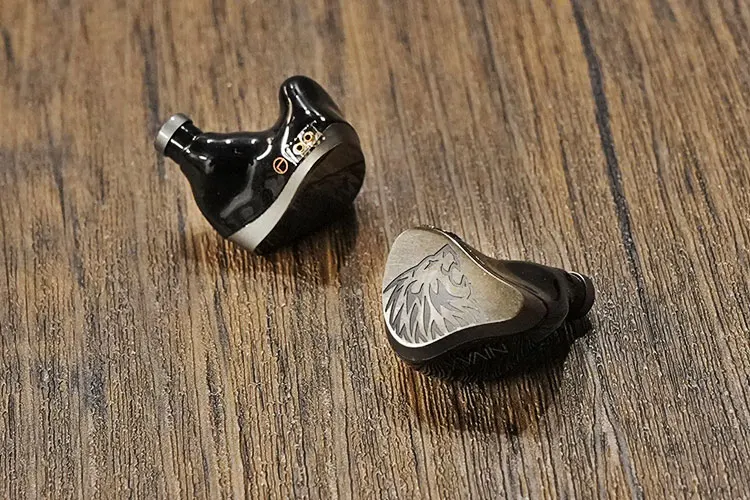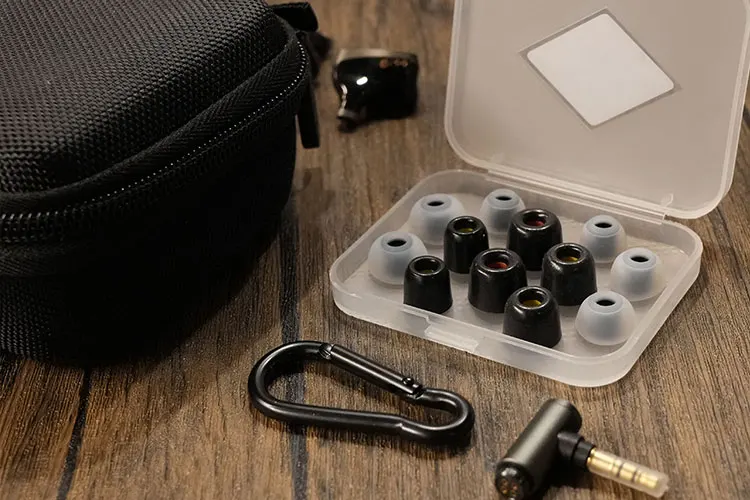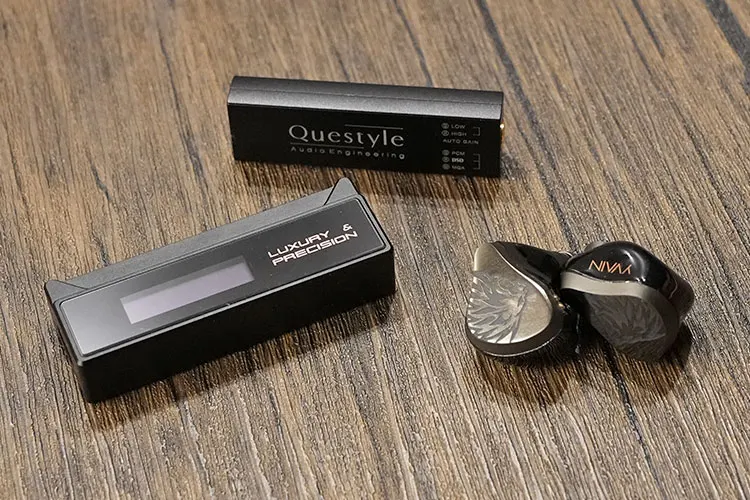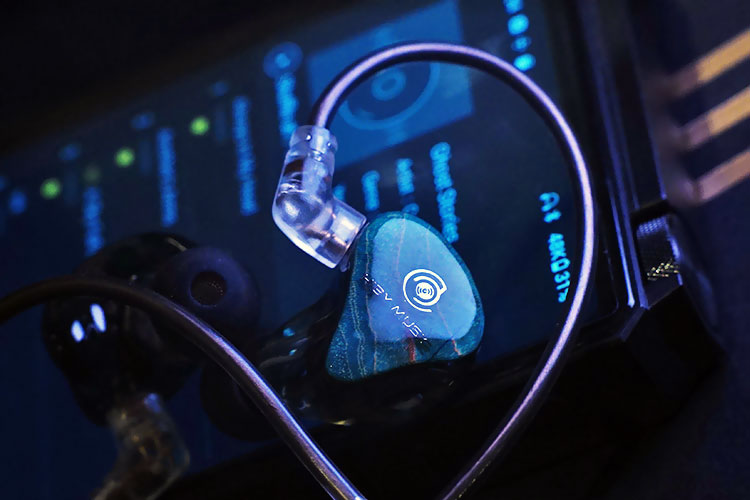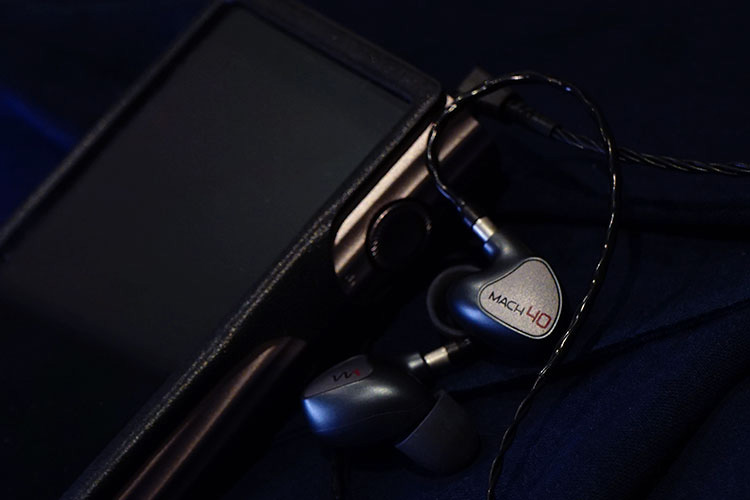In this feature, we review the HiBy Yvain, which is a new 3-way quad-BA driver universal IEM designed for vocal lovers and quiet listening. It is priced at $239.
Disclaimer: This sample was sent to us in exchange for our honest opinion. Headfonics is an independent website with no affiliate links. We thank HiBy for their support.
You can click here to read more about the HiBy products we have previously featured on our website.
Note, that this article follows our latest scoring guidelines which you can read in more detail here.
The HiBy Yvain universal IEM is named after the knight of the lion from the Arthurian legend, as represented by the symbol on its CNC-machined faceplate.
This is the 6th IEM release from HiBy and priced at $239 SRP it takes a seat just behind the long-running Crystal 6 series with the Zeta launched in mid-2023 which is still their flagship in-ear monitor.

Tech Highlights
The Yvain is a universal IEM that features a quad-BA driver design with a 3-way crossover.
Inside the Yvain you will find a dual, full-range Sonion balanced armatures, one Non-dampened Knowles Bass driver, and a Knowles Hi-res tweeter. The three drivers are not packed together and are secured independently.
The Yvain is tuned to cater to stage and recording monitoring needs while also delivering an enjoyable musical experience. In short, it should be ideal for vocal lovers and as HiBy describes it ‘quiet listening’.
Design
HiBy makes use of 3D printing technologies this time and uses medical-grade materials for the body.
The earphone has an unusual structure as you can see the silver faceplate has a curvy shape and is seamlessly fused with the housing, which looks like the armor of knights. The product logo is smartly positioned around the splitting line between the faceplate and the body.
On the two faceplates, a lion icon representing the knight of the lion – Yvain from the 12th Century Arthurian romance is laser etched. Such represents bravery, nobility, honor, and loyalty.
The Yvain is middle-sized and fits easily into the ear without the need for adjustment. The overall aesthetics is convincing considering how HiBy fits the irregular metallic faceplate onto the body framework, and the construction is rugged.
Comfort & Isolation
The Yvain has a nicely tilted insertion angle and it seals well immediately when you put it in the ears. It sits and locks on the outer ear comfortably and the body feels well-polished.
Isolation is quite strong and from HiBy it can provide -26 dB passive noise isolation, which is pretty much the standard number.
However, I believe it seals better than some earphones that put the same number on the specifications. It does not stress my ears after a 2-hour listen and there is no need to adjust the earphone all the way.
Tips
The Yvain comes with two different types of tips, foam and silicone. Both variants come in the usual small, medium, and large sizes with the M-size form pre-installed out of the box. As usual, it is recommended to give every tip a try as a measure of fine-tweaking.
The foams help enhance the seal and bass performance and also give a slightly warmer, forward bass flavor. The silicone tips sound cleaner and promote resolution, sounding less colored than the foam performance.
Stock Cable
The Yvain comes with a Litz Type 4, PCOCC cable which has a coaxial design. HiBy claims the design has low internal resistance, distortion, and anti-interference properties, which helps extract more details from the music.
The cable is 0.78, 2-pin terminated, and features a locking mechanism on the source end, which allows users to instantly swap from the 3.5mm plug to the other 4.4mm plug supplied and secure it quickly by turning the lock.
Packaging & Accessories
When HiBy sent over the Yvain, we didn’t receive the full packaging, but we did receive the tips set and the carrying case.
The provided carrying case is one of the nicest cases I have seen; it is very well built and has plenty of room, even for bigger IEMs with a thick cable. There is also a cleaning brush which you could use to clean the nozzle.
Sound Impressions
The following sound impressions were created with a mix of the Cayin RU7, Questyle’s M12, the FiiO M11 Plus ESS, and HiBy’s R5 Gen 2.
Summary
The Yvain can be easily driven and exhibits a clean, M-shaped output signature that allows the vocalist and treble details to be heard while not sounding clinical like typical monitors.
While it is quite responsive to the signature of the source, it remains dynamic and clean with most sources I test it on.
Bass
As mentioned above, there is a big, discreet bass driver for reproducing the lower frequencies.
Being called a monitor doesn’t necessarily mean that the bass quantity is weak, and the Yvain is delivering good weight, punch, and responsiveness in the lower end. It is possible to pick out bass details from the mix going down the 40-50Hz range in a quiet room.
While there is a sufficient extension, the bass isn’t boomy and the vocal is well-weighted to cut through the mix and comes closer to the listener, with sufficient body, and is cleanly outlined even when tested on weaker sources.
The bass is overall quite impactful when listening on a dongle and is more responsive when fed with stronger power.
Mids
The bass is smoothly articulated to the midrange, which is rendered to sound clean being more elevated in the upper mids region to boost vocal clarity and allow even weaker voices to be clearly outlined.
This aligns with the monitoring purpose, allowing the voice to be heard and defined. The midrange feels quite unaltered and detail retrieval for the vocal in particular, is decent.
Other instruments such as acoustic guitars maintain a fairly close positioning and sound swift without being overly emphasized.
There is still a tad bit of warmth from the lower mids, so the output doesn’t sound cold or too stressed on the treble, allowing modern music genres to sound engaging.
Treble
The higher frequencies on the Yvain sound quite controlled without any harshness or spikes. This is different from stereotype monitoring style earphones or speakers which normally sound harsher, and even at higher gain the treble remains quite rounded.
Cymbals, flutes, and violins are presented with good clarity and dynamics without the spikes, just at the expense of some air. It still sounds fairly extended with sufficient harmonics retained to not sound dull.
Soundstage
Due to the roll-off in the treble as well as the well-weighted vocal, the Yvain has a rather intimate presentation as if listening in a classroom-sized venue.
The vocal is well positioned and is boldly outlined with good power, positioned quite close in front, similarly backing instruments across the mid-lows such as bass guitars.
It may sound congested with larger ensembles but with a small band and drum sets, it feels quite well defined, and you can pick out different elements clearly, while the tuning does not sacrifice bass presence for clarity or overly weighting the upper mids and treble for air.
Synergy
Efficiency
The HiBy Yvain is rated 23Ω in impedance and 116 dB/mW @1kHz for sensitivity. It is fairly sensitive and can be driven loudly by small DAPs as well as dongles and delivers good dynamics and resolution.
With any paired source, the Yvain is quiet in the background, and again the seal and passive noise canceling are great with this design.
The slightly high impedance allows the Yvain to achieve a more consistent response over different gears. However, it is still easy to hear the difference when using a better decoder and amplifier which would reflect in a stronger perception of bass density.
I tested it on a Yamaha mixer, and it pairs quite well to sound punchy. It also smooths out the harshness in the treble and can suppress some of the background noise.
Pairings
The Yvain is quite adaptive to different devices being fairly easy to drive and offering a relaxing tuning.
For me, it works best with a more defined player or decoder that allows the mid-bass to sound more textured, the treble to sound more open, and also to give the vocal more fullness.
That being said the vocal is quite upfront and it doesn’t need high gain to bring it to the front stage. Testing with the RME ADI-2 Pro there is a bit of warmth which colors the vocal lusher and renders the headroom quite intimate with good stereo image.
The vocal would need more decoding power and swing to be outlined clearer and using 4.4mm outputs might give it some advantage to sound more open and scale up in staging size.
Testing the Yvain on dongles like the Cayin RU6 also yields a relaxing result. It doesn’t feel exactly like the monitoring style I would imagine which presents the vocal body more smoothly and emphasizes more on the upper mids.
Instead, it is on the more vivid side and allows the lead singer, the guitar to stand out more than the accompanying instruments.
Select Comparisons
Hiby Crystal 6
Technical
The Crystal 6 as you can guess from the name, has a unique 1+1+2+2, 4-way 6-BA per side configuration. It is 14Ω in impedance and 107 dB/mW in sensitivity, which makes it quite easy to drive off portable sources.
Design
The Crystal 6 is housed in resin with a stabilized wood faceplate which looks quite artistic. You can also view the components inside and compare the Yvain/s internals.
I like how the Yvain is themed and has a story that resonates with the determination of HiBy’s engineering team, and the choice of the lion artwork is quite cool in practice. I also find the Yvain fitting better on my ears than the Crystal 6, yet both IEMs are very light.
Performance
The Crystal 6 is probably aiming at sounding ‘crystal’ clear, and it is responsive to power being able to deliver clean, extended treble on smaller outputs.
Compared to the Yvain it feels more energized in the higher register and while it is also rounded, more focus in the tuning is put on the treble therefore you can pick out more details from the upper part of the vocal and instrument’s harmonics.
The Crystal 6 is less forwarded in the mid-range frequencies, and you can hear deeper sub-bass. However, it lacks the intimacy and fullness of the Yvain, which is more balanced and consistent in the output signature with different sources. It is also more organic with vocal presentations.
This makes the Yvain a better companion with different recording sources or camcorders that often pick up the vocal in a sharp way for clarity, and the Yvain can compensate for it well.
Westone MACH 40
Technical
The MACH 40 from Westone’s Premium Reference line has a 4-BA design utilizing a 3-way cross-over that consists of 1 tweeter, 1 driver for the mids, and a dual-BA for the bass.
The MACH 40 is rated 30Ω in impedance and 100 dB in sensitivity, which is quite a bit less sensitive than the Yvain.
Design
Both IEMs are well-engineered to not look like a run-of-the-mill IEM. The Yvain shares a similar palette with the MACH 40, which is sleeker and has a thin SuperBax cable that is ideal for stage use and uses the T2 connector system.
The Yvain has a larger enclosure to house the bigger bass driver and shows a beautiful curve in the transition area between the faceplate and the body. It also uses the more conventional 2-pin design that allows for aftermarket cable rolling.
Performance
Both IEMs have a 4-BA design though the tuning and response to different sources is quite different. The MACH 40 is tuned more towards the lower end and sounds fuller in the bass, which can deliver big drums and deeper synthetic bass at ease.
The Yvain doesn’t push the bass as prominent and allows more sub-bass to be detected, as well as elevating the vocal range more, giving it the power to cut through the mix.
The upper vocal frequencies are more cleanly rendered on the Yvain, and it sounds overall cleaner than the MACH 40. The Yvain also sounds more resolving in the mids than the MACH 40, which has a smoother presentation.
The Yvain is easier to drive and sounds more dynamic and cleaner on a dongle. Whereas the MACH 40 may need more power, but it has room to sound more expanded and take on higher gain to deliver better resolution and clarity.
Our Verdict
The HiBy Yvain has a tuning that feels loyal to the recording and delivers a fairly natural tone that puts more attention to the vocal. The aesthetics also suggest a growing maturity in how HiBy wants its IEMs to look and feel to users.
The Yvain is very friendly with a low power source so you can plug it into a wide range of sources and the tuning still allows adequate clarity and resolution.
The swappable plug system makes it even more versatile to switch between 3.5mm outputs and 4.4mm equipped players.
This is an IEM that delivers a consistent signature over different outputs, which makes it a suitable candidate if you want an IEM that serves some simple field works, monitoring or mixing, and to enjoy music in your leisure time.
HiBy Yvain Technical Specifications
- Drivers on each side:
- Tweeters: Knowles Hi-res BA x 1
- Mids: Sonion Customized BA x 2
- Woofers: Knowles Non-damper BA x 1
- Impedance: 23Ω
- Frequency Response: 20-40,000Hz
- Sensitivity: 116dB/mW
- Max Input Power: 100mW
- Length: 1.25m
- Wire Material: PCOCC
- THD <1%
- Weight :4.7g(Each Side)
- Socket:0.78mm Dual-pin / Detachable

